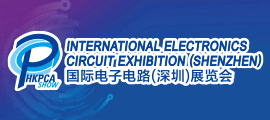- Author:
- Source: PCB
- Date: 2022-01-01
- Views: 5639Times
The quality and reliability of SMT processing products of PCB assembly mainly depend on the manufacturability and reliability of components, electronic process materials, process design and assembly process. In order to successfully PCB assembly products, on the one hand, it is necessary to strictly control the quality of electronic components and process materials, that is, incoming material inspection; On the other hand, the manufacturability (DFM) of SMT process design must be reviewed for the assembly process. After and before each process in the implementation of the assembly process, the process quality inspection, i.e. surface assembly process inspection, includes the quality inspection methods and Strategies of each process in the whole assembly process, such as printing, patch, welding, etc.
1. Inspection contents of solder paste printing process
Solder paste printing is the initial link in PCB assembly process. It is the most complex and unstable process. It is affected by a variety of factors and has dynamic changes. It is also the root of most defects. 60% - 70% of defects appear in the printing stage. If a detection station is set up after printing to detect the solder paste printing quality in real time and eliminate the defects in the initial link of the production line, the loss and cost can be reduced to the greatest extent. Therefore, more and more SMT production lines are equipped with automatic optical detection for printing links, and even some printers have integrated solder paste printing and measurement systems such as AOI. Common printing defects in the solder paste printing process include no turn of solder on the pad, too much solder, solder scraping in the middle of the large pad, solder sharpening at the edge of the small pad, printing offset, bridging and contamination, etc. The causes of these defects include poor solder paste fluidity, improper template thickness and hole wall processing, unreasonable printer parameter setting, insufficient accuracy, improper selection of scraper material and hardness, poor PCB processing, etc.
2. Inspection contents of component mounting process
Patch process is one of the key processes of PCB assembly production line. It is one of the key factors that determine the automation degree, assembly accuracy and productivity of assembly system, and has a decisive impact on the quality of electronic products. Therefore, the real-time monitoring of the patch process is of great significance to improve the quality of the whole product. Furnace front (after mounting, the inspection flow chart is shown in Figure 6-3. The most basic method is to configure AOI after the high-speed mounter and before reflow soldering to detect the quality of the mounter. On the one hand, it can prevent defective solder paste printing and mounter from entering the reflow soldering stage, resulting in more trouble; on the other hand, it can provide support for timely calibration, maintenance and repair of the mounter to make it more convenient Always in good working condition. The inspection contents of the patch process mainly include the patch accuracy of components, controlling the mounting of fine spacing devices and BGA, various defects before reflow soldering, such as missing and offset of components, collapse and offset of solder paste, contamination of PCB surface, no contact between pins and solder paste, etc. Use character recognition software to read the value and polarity recognition of components and parts, and judge whether they are pasted incorrectly or inversely.
3. Inspection contents of welding process
100% full inspection is required for products after welding. Generally, the following contents need to be tested: check whether the surface of the solder joint is smooth and whether there are holes, holes, etc; Check whether the solder joint shape is half moon and whether there is more or less tin; Inspect whether there are defects such as monument, bridge connection, component displacement, component missing, tin beads, etc; Check whether all elements have polarity defects; Check whether there are short circuit, open circuit and other defects in the welding; Check the color change of PCB surface.
版权所有 ©深圳市亚中咨询有限公司
电话:0755-25856945 邮箱:pzl88smt@126.com 网址:www.smt668.com
地址:深圳市罗湖区怡正发大厦 SMT专业网版权所有(c) 2010 粤ICP备17073069号































